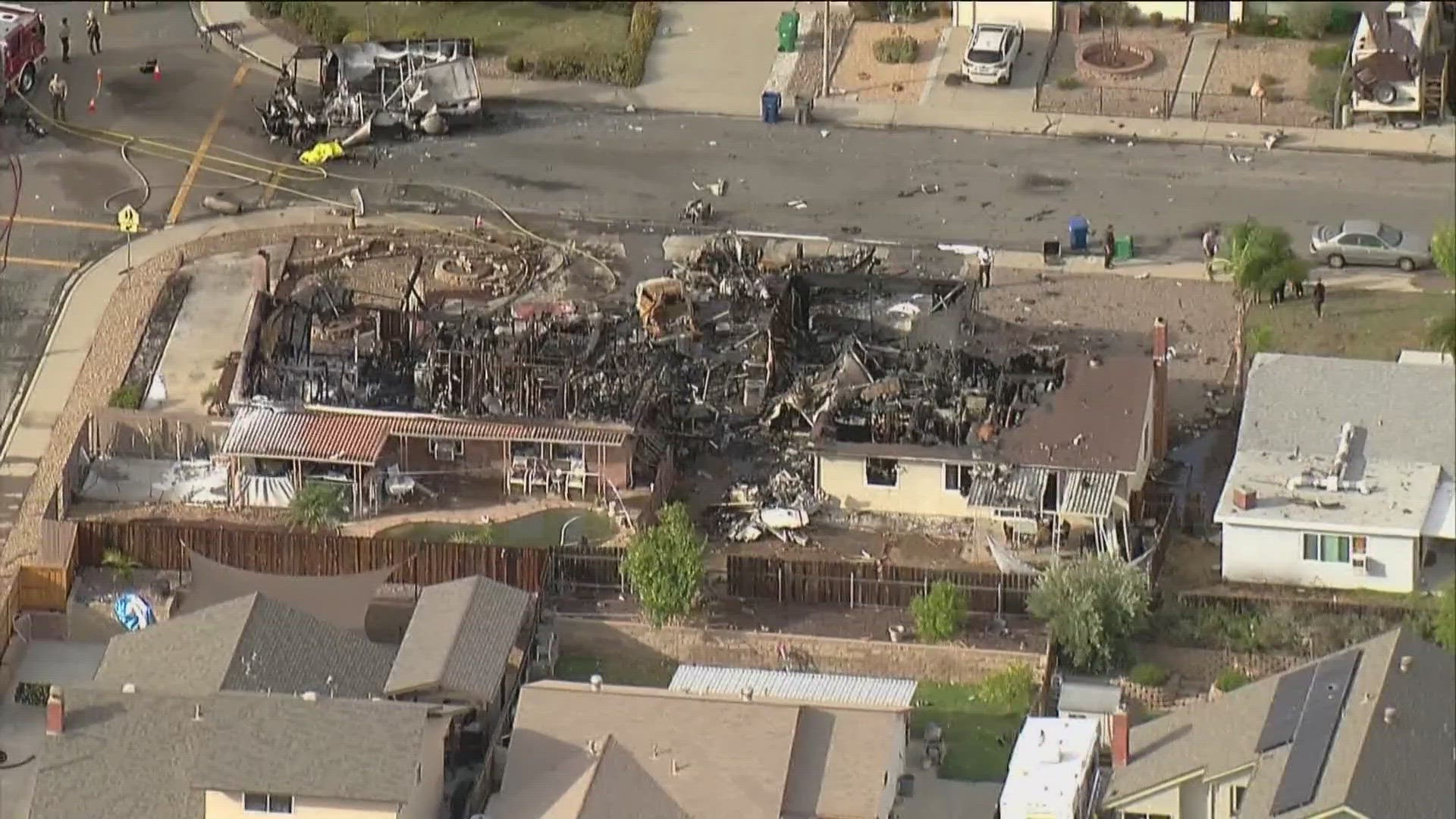SANTEE, Calif. — More than two years after a plane crash in Santee left two people dead and two others injured, the National Transportation Safety Board (NTSB) has released its final investigative report on the accident.
The report provides more clarity as to what most likely caused the crash of a twin-engine Cessna into a Santee neighborhood in October of 2021.
The crash killed the plane's pilot, as well as a UPS driver who was on the ground at the time.
According to the report, the probable cause of the accident was "loss of control" by the pilot due to "spatial disorientation" as the pilot was attempting to come in for a landing at Montgomery Field.
Leading up to the crash, the air traffic controller on the ground repeatedly warned the pilot that he was flying dangerously low, urgently requesting that he increase his altitude.
After several urgent commands to ascend, the pilot, 64-year-old Dr. Sugata Das, failed to respond. Moments later, his Cessna crashed into a neighborhood in Santee.
"It should not have happened," said Robert Katz, a fight instructor and commercial pilot with 42 years of experience. "It was entirely preventable."
Katz read the NTSB's final investigative report on this accident.
"It tells the story of a pilot who is descending through the clouds to attempt an approach into Montgomery Field," Katz said.
During that descent. according to the report, the pilot most likely became disoriented while his aircraft was in the clouds.
"Spatial disorientation us a fancy way of describing vertigo," Katz said. "Vertigo is what happens when there is a conflict in the brain between what the eyes see and the body feels."
"It is like being in a cotton ball," he added. "You can't see anything outside the airplane as a point of reference. You have no horizon, you don't know which way is up, which way is down, which way is left which way is right."
A situation like this requires the pilot to rely on the plane's gyroscopic flight instruments.
"This is an acquired skill that does not come naturally to anyone," Katz told CBS 8. "In flying, we say those skills are 'use or lose'."
According to the report, over the roughly three years leading up to the accident, out of the 152.2 hours the pilot logged in the plane, 8.2 hours were in "instrument meteorological conditions."
"Eight-point-two hours of instrument time across three years is not enough to stay proficient," Katz said.
He added that, sadly, it is inevitable other accidents like this will likely happen again.
"The only way that things can change is if the pilot community pays attention to these things when they happen to learn from the mistakes of others," he added. "The only good that can come out of a tragedy like this is what the pilot community learns from the mistakes of others, and that starts with the decision to take the initiative to learn something."
WATCH RELATED: Second anniversary of deadly plane crash in Santee

